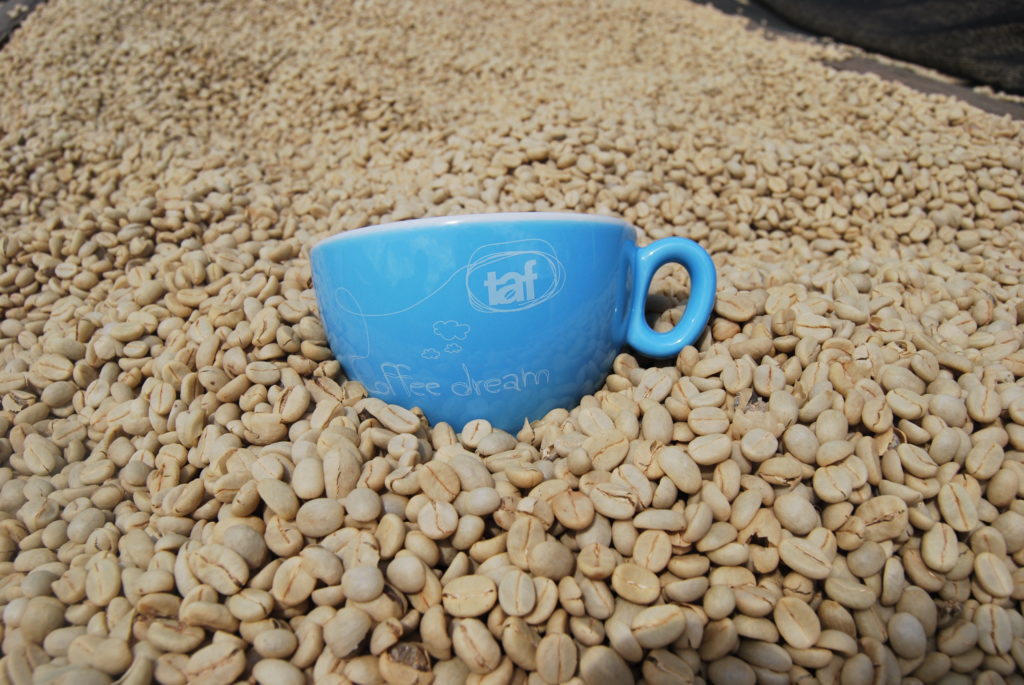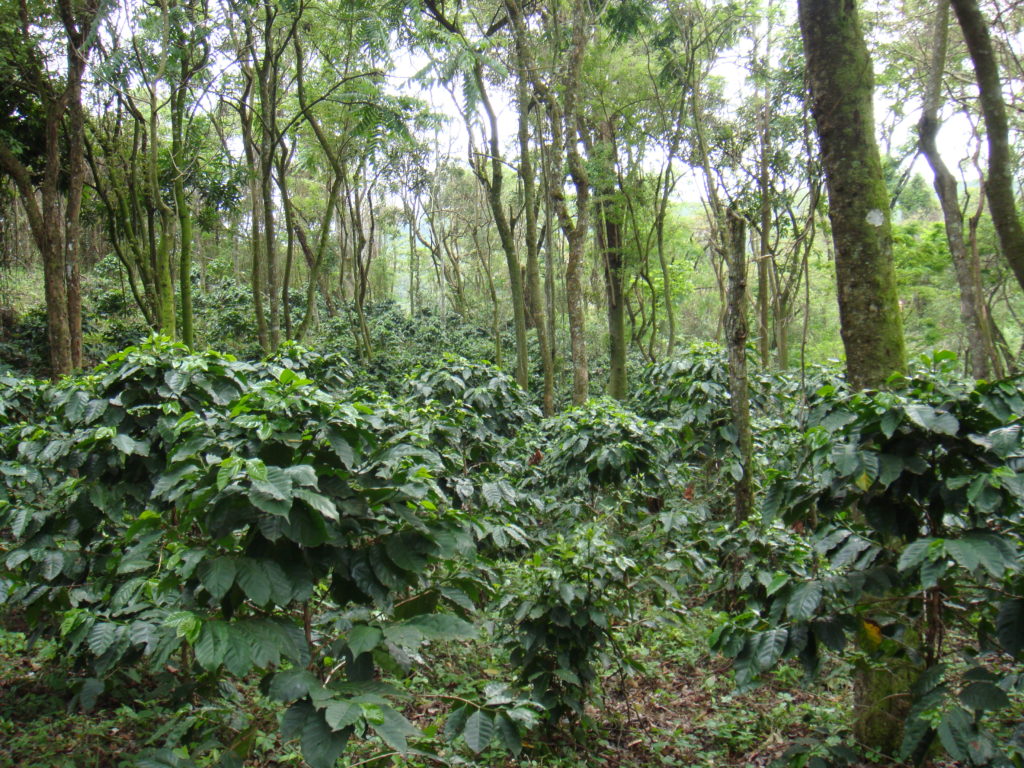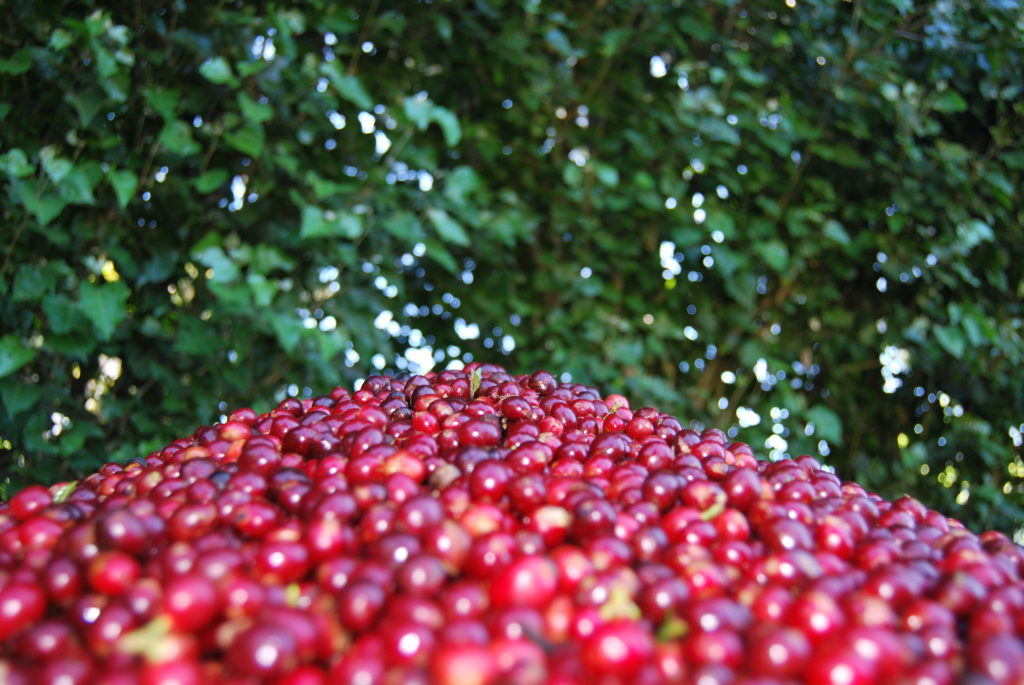The legend begins at Ethiopia where Shepard Kaldi noticed that each time his goats ate seeds from a particular tree they became more active. This tree was the coffee tree which was transferred to Arabic peninsula between 575 – 850 A.D. It is still unclear how it was transferred. It is possible that the African tribes which were traveling north from Kenya and Ethiopia to the Arabic peninsula were carrying seeds with them. There started the evolution of the beverage (the word coffee means beverage and origins from the Arabic word kahwa). At first, it was preferred by the monks who realized that it kept them awake during late night prayers. In the beginning of the 17th century first the Dutch transport the tree from the Arabic peninsula and attend to cultivate it at their colony in Java. Later the plant was taken by the French and was cultivated at Reunion island (Indian Ocean). Then it was transferred to the New World and huge plantations of coffee trees were created. Coffee tree is cultivated in countries located in between the Tropical of Cancer and Sagittarius (due to climate, high temperature and intense rains its cultivation is achieved). Every type of coffee (Greek – filter – espresso) originates from the different baking procedure of the seeds, the way they are milled and the way they are produced. Coffee seeds differentiate with respect to the cultivation location (climate conditions height soil). Taste testing (cupping) is made by specialists and the product is evaluated after numerous tests. The different prices of raw coffee are formed in New York and London markets.
General Information
The term “specialty coffee” refers to the highest-quality green coffee beans roasted to their greatest flavor potential by true craftspeople and then it is brewed to well-established standards. Specialty coffee is not defined by a brewing method, such as the use of an espresso machine. The definition of specialty coffee begins at the origin of coffee, the planting of a particular varietal into a particular growing region of the world. However, the concept of specialty also includes the care given to the plant through harvest and preparation for export. Specialty coffee in the green bean phase can be defined as a coffee that has no defects and has a distinctive character in the cup. It is not only that the coffee doesn’t taste bad; to be considered specialty it must be notably good. The next phase is roasting, and there is a lot of opportunity here to continually define specialty.
Every coffee in combination with every roaster has a potential to express itself in a way that will be most satisfying for every customer. Bringing out a coffee’s distinctive character is the roast master’s challenge. If he comes close to succeeding, then it is still specialty if it started out in the green form as specialty. In roasted coffee, most agree that freshness is a part of the definition for specialty. If the coffee is not highly aromatic, then it no longer deserves to be called specialty.
Then there is the brewing phase. There are many different methods, and all are capable of brewing beverages that can qualify as specialty coffee, but only if done correctly. The right ratio of coffee to water, the right grind suited to the method and the coffee’s physical characteristics, the proper water temperature and contact time, a good preparation of the coffee “bed” or “cake” are all fundamentals that must be satisfied to produce a specialty cup of coffee.
Specialty coffee is, in the end, defined in the cup. It takes many steps to deliver that cup into the customers’ hands. Each of those steps can uphold the classification of specialty if quality has been maintained throughout all the preceding steps.
Typica
This distinct coffee variety is known for the elongated oval shape of the bean. Typica is also known as “Arabigo” or “Criolo” in Central America. The Typica variety produces a clean and resonant acidity which increases in intensity at higher elevations. The cup can be characterized by lemon and floral notes and by a sweet aftertaste.
Bourbon
Bourbon was first discovered on the island Reunion which is situated near Madagascar and was originally named Bourbon. Bourbon has a distinct flavour and a bright acidity with a winy sweet aftertaste. Bourbon varieties that are cultivated at higher elevations also have some aromatic properties. The beans of this variety are small and round.
Caturra
Caturra was first discovered in Brazil. Caturra is a mutation of bourbon and it has the ability to produce good quality with high production volumes. The leaves of the Caturra tree are similar to the bourbon leaves. The cup characteristics of the Caturra variety include a clear acidity with lemony flavour notes, especially at higher elevations. The beans have a dense complexity and a centercut that seems to be embedded into the inner layers of the bean.
Catuai
Catuai is a cross of the Mundo novo and Caturra varieties. One benefit of this variety is its resistance against strong winds and rain. The cherries do not easily fall under these conditions. The Catuai variety does not have a distinct flavour profile.
Mundo Novo
This variety is a cross of the Typica and Bourbon varieties. The benefit of this variety is the high productivity levels at medium to high elevations as well as a good resistance to diseases. The flavour profile lacks sweetness and can be characterized by a bitter undertone.
Maragogype
This variety is named after a place called “Maragogype” in Bahia, Brazil. In general, the flavour profile of the Maragogype beans which are unusually large is very mild with a subtle sweet acidity.
Pacamara
This variety is a cross between the Maragogype and Pacas varieties.
Pacas
Paca is a cross between the Caturra and Bourbon varieties.
Catimor
Catimor is a cross between an Arabica-Robusta variety from Timor and Caturra. The quality of the Catimor beans is distinct because of its sour acidity with a slightly sharp mouthfeel and a salty aftertaste.
Geisha
This is a variety that comes from elegant trees with large fruits. The cupping profile of the Geisha variety produced in Panama includes a floral aroma with a persistent exotic aftertaste and a resonant refreshing acidity. The Geisha beans have a curvy and thin shape.
Villa Sarchi
A natural mutant of the Bourbon sub species, occurred in Sarchi town in West Valley, Costa Rica. With good production, it has proven to present complexity in the cup with flavors found in such as green grapes, green apples, sparkling notes.
Pache
A mutation of Typica coffee variety that was first observed in Guatemala. It is also known as Pache Comun.
Villalobos
The variety was born in Western Valley of Costa Rica. Villalobos is an exotic variety, where the soil is extremely rich and the micro-clime ideal, to give to the tree the sweetness and balanced acidity, two of its basic characteristics.
Castillo
This is a sub-variety of Colombia (mutation) which was adapted in a laboratory, in order to perform best in specific climates and soils. Today is the variety most grown in Colombia. Sidra It is a crossed variety, made of red Bourbon and Typica, retaining characteristics of both “ancestor” varieties, that result in a balanced impression. In 2013 Sidra was cultivated in Colombia, in the innovative farm La Palma y El Tucan. The Sidra has a unique character, tastes like fresh apple, while its acidity is described as malic.
Sidra
It is a crossed variety, made of red Bourbon and Typica, retaining characteristics of both “ancestor” varieties, that result in a balanced impression. In 2013 Sidra was cultivated in Colombia, in the innovative farm La Palma y El Tucan. The Sidra has a unique character, tastes like fresh apple, while its acidity is described as malic.
Topazio
Topazio is a cross between Mundo Novo and Yellow Catuai, first selected at IAC in the 1960’s and later intensified by the state research organization EPAMIG in Minas Gerais. The trees have a low, relatively compact stature but are not resistant to diseases. Cherries ripen to deep yellow, inspiring its name indicative of the yellow gemstone. Topazio is leafy with a high capacity for production and mostly even cherry maturation, making it an efficient varietal to plant for mechanized harvesting and well suited for larger estates requiring uniform plantings to make the most of labor and management. The Topazio variety is especially well suited to the climate of Minas Gerais and does well at high densities and as part of irrigated plantation.
Harvest
The flowering of the coffee tree varies according to the production country as well as the microclimate. After 8-9 months, the harvest begins at the same time the flowering takes place. Only ripe cherries are picked, meaning the cherries that have a deep red color or deep yellow color (depending on the coffee variety). These coffee cherries are not affected by diseases or other harming organisms. Besides, only these coffee cherries are characterized for their high quality.
Processing
The ripe cherries are transferred the same day of the harvest at the processing station. There are several methods used for coffee processing:
-Natural
-Wet
-Pulped natural
-Honey (red & black)
-New processing methods
Coffee processing is a critical stage of the quality chain of the green bean. The way in which the mucilage is being removed, shapes coffee taste.
Natural (dry-unwashed)
The natural processing method is the oldest method during which the seeds are placed in elevated beds in fine layers so that drying can be done in a natural way, with sun heat. The sugars dry for 10-14 days and the dry hull is removed mechanically with the use of hullers. Factors that affect the processing method are the sun, humidity in the air as well as systematic shaking of the seeds. During the night, the seeds are transferred to a dry place to avoid the increase in humidity concentration.
Wet (washed)
The ripe cherries are compressed through the depulpers and in that way the skin is removed. With the use of water, the seeds with the mucilage are transferred through channels in tanks. Then, the mucilage is removed during the fermentation process. During fermentation, a biochemical reaction takes place or else called hydrolysis of the mucilage that surrounds the coffee seeds. Then the seeds are washed and transferred to the drying station. Drying can be achieved mechanically or with the sun. When humidity inside the bean reaches the desired levels (10-12% of the initial 60%), the green bean is released from the so-called pergaminum and is being classified according to its density. Finally, the green coffee is stored in bags and is ready for export.
Pulped Natural
The outer skin of ripe cherries is removed through depulpers as in the wet processing method. The difference with the pulped natural method is that the seeds are not transferred in tanks where the mucilage is removed, instead they dry with the parchment. This method is applied in countries with low humidity levels.
Honey (red & black)
The honey processing method is used in Costa Rica and Panama and is similar to the pulped natural method, meaning that the outer skin of the ripe cherries is removed with depulpers and the mucilage is partly removed mechanically while the rest dries with the parchment that surrounds the green bean. The long lasting contact of the mucilage with the parchment in combination with the nature of this processing method results in a coffee with rich body and mild acidity. Depending on the percentage of mucilage removal, honey processing method is named red & black honey.
New processing methods
In Colombia and more specifically at La Palma y El Tucan, they are experimenting with new processing methods such as the aerobic fermentation (38hrs) without the use of water and then the drying of coffee as well as the pulp-covered method (22hrs) and then coffee drying. The objective is to reveal new taste profiles.
Roasting
Roasting reveals and supports the dynamics of coffee, it is a science and an art that requires long-term experience, focus and time. Roasting is also considered as the roaster’s signature. During the first stage of roasting, the green beans are dried by gently vaporizing stored water molecules – as heat passes inside the bean, where water molecules are. The beans turn from bluish-green to yellow-orange. As the beans turn from yellow to light brown, going past 160 Celsius degrees, they begin cooking from within. The steam that escapes as well as carbon dioxide begin building pressure on the beans’ cell walls. It is up to the roaster to decide when to end roasting, as the beans go from dark tones of brown to black. The choice for a roast color is a choice for taste. The coffee aroma is created through a series of primary and secondary reactions and more than 1000 compounds have being defined. The coffee beans have a weight loss of 20% due to humidity loss. The Maillard reaction is the driving power behind coffee compounds.
Cupping
High quality in taste is the ultimate criteria for Specialty Coffees. We systematically cup all coffee samples in our own lab. Therefore, cupping is an integral part of the whole procedure and it is done systematically. The assessment of the aroma, the freshly ground coffee, the flavour and the taste of the freshly brewed cup, as well as the mouthfeel and after-taste, are all important characteristics and determine the coffees personality.
Preparation
For the preparation of great coffees, the barista has to reveal all the unique characteristics of the coffee, taking advantage of his expertise.



